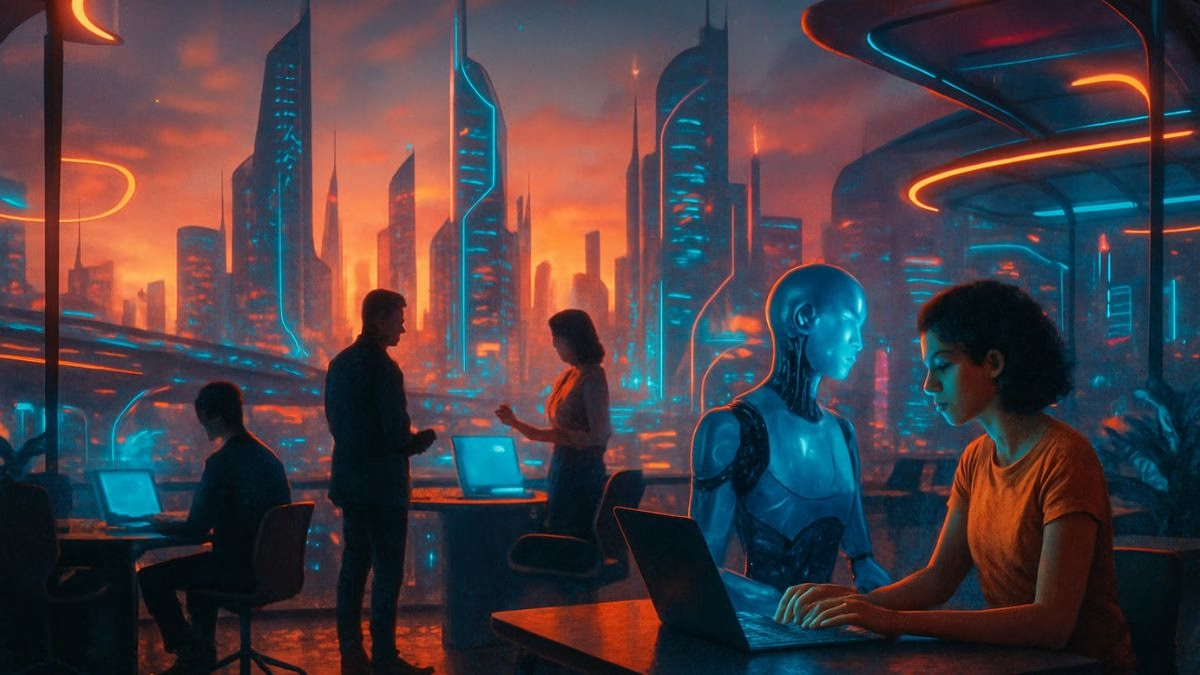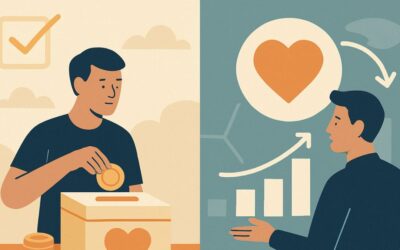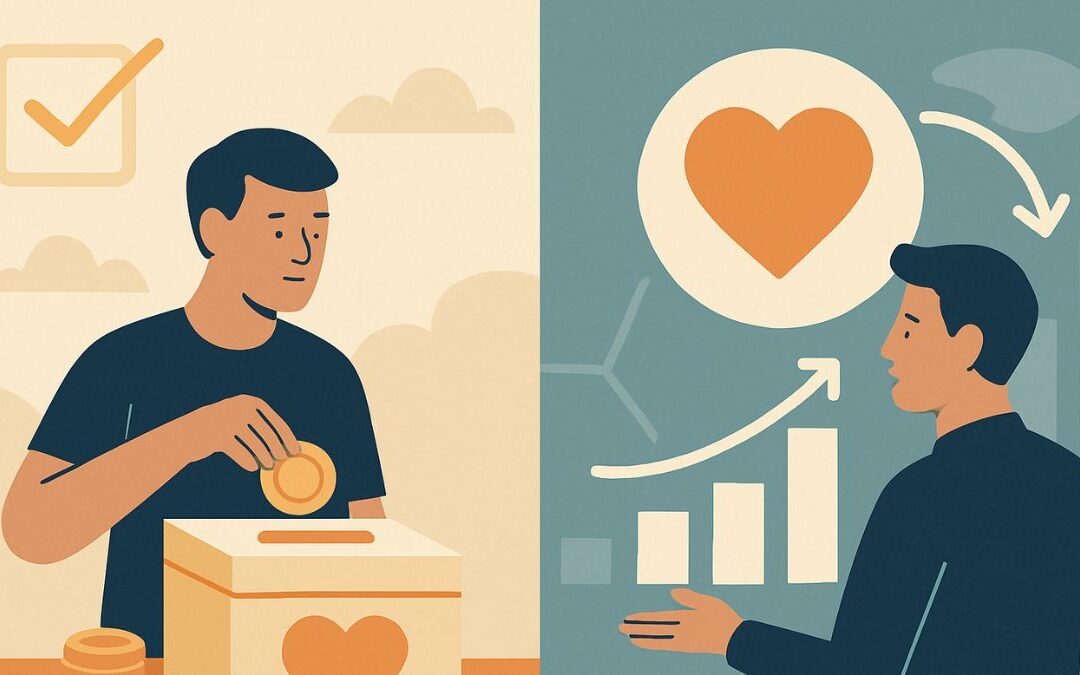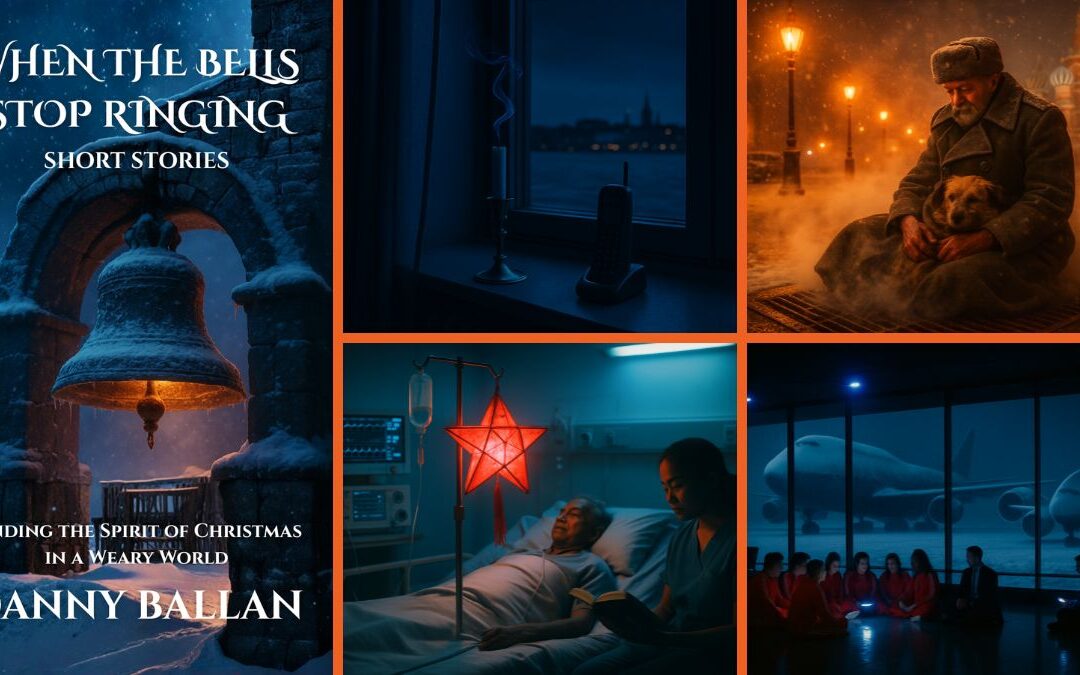- Audio Article
- The Irreplaceable Core: A Roadmap to Our Human Advantage
- Navigating the Transition: Upskilling for a Human-Centric Future
- MagTalk Discussion
- Focus on Language
- Vocabulary Quiz
- Let’s Discuss
- The article frames the automation of routine tasks as a “liberation from drudgery.” Do you agree with this optimistic view? What are the potential downsides or challenges of this “liberation”?
- Of the three “future-proof” pillars (Emotional Intelligence, Creative Problem-Solving, Critical Judgment), which one do you think will be the most valuable in the next 20 years? Why?
- How can our current education system be reformed to better cultivate these three pillars in students? What needs to change?
- The article focuses on professional work. How will this shift away from routine tasks and toward purpose-driven roles affect our personal lives and hobbies?
- What is a job that exists today that you believe will be almost completely obsolete in 30 years? Conversely, what is a job that doesn’t exist today that you believe will be common in 30 years?
- Learn with AI
- Let’s Play & Learn
Audio Article
For the better part of a century, the robots have been coming for our jobs. The narrative is as familiar as a folk tale: sleek, metallic arms replacing factory workers on the assembly line; tireless software automating the work of accountants and paralegals. Today, with the meteoric rise of generative artificial intelligence, that familiar hum of anxiety has crescendoed into a roar. AI can now write code, compose music, and draft legal documents. The question on everyone’s mind is no longer a distant sci-fi hypothetical: “Will a machine take my job?”
This fear, while understandable, is profoundly unimaginative. It frames the future of work as a zero-sum game, a grim contest between human and machine that we are destined to lose. But this narrative misses the point entirely. The story of technological progress has never been about a simple replacement of human labor. It has always been about a transformation. The tractor didn’t just replace the farmhand with a machine; it liberated a workforce to build the modern industrial economy. The computer didn’t just eliminate the need for vast rooms of human calculators; it unlocked an information age that created industries we could barely have conceived of.
Today, we stand at the precipice of a similar, perhaps even more profound, transition. AI is poised to take over the tasks that are repetitive, predictable, and soul-crushingly dull. This isn’t a threat to our value; it’s an invitation to rediscover it. It’s a seismic shift that will push us away from the drudgery that machines can do and pull us toward the work that only humans can. The future of human work isn’t about becoming obsolete; it’s about becoming more human. It’s a future defined not by what we can do, but by who we can be: empathetic counselors, creative problem-solvers, and wise arbiters of a complex world.
The Irreplaceable Core: A Roadmap to Our Human Advantage
As the tide of automation washes away the shores of routine labor, it reveals the bedrock of human skills that remain—the abilities that are stubbornly resistant to computation. We can’t out-calculate the machines, but we can outperform them in the domains that are quintessentially human. This isn’t about some vague, romantic notion of the human spirit. It’s a pragmatic roadmap for navigating the future of work, centered on three core pillars of human intelligence.
Pillar 1: Emotional and Social Intelligence
The first and perhaps most resilient pillar is our capacity for connection. AI can process a patient’s medical chart with lightning speed, but it cannot hold that patient’s hand and offer a word of genuine comfort. It can analyze a student’s test scores, but it cannot notice the subtle look of confusion or anxiety on their face and adjust its approach with a dose of encouragement. Empathy, rapport, compassion, and trust are not data points; they are the currency of human interaction.
This is the domain of nurses, therapists, social workers, educators, and great leaders. Think of a skilled therapist. Their job is not to follow a flowchart of diagnoses. It is to build a relationship of trust, to listen not just to the words being said but to the emotions simmering beneath them, to read the nuanced language of a trembling hand or a averted gaze. As Dr. Kai-Fu Lee, a former executive at both Apple and Google, has often argued, these “compassion-based” jobs will be among the most secure and fastest-growing in the coming decades.
Consider the work of a hospice nurse. Maria, a veteran in palliative care, describes her role as “90% presence and 10% procedure.” “A machine could monitor vitals and administer medication on a schedule,” she explains in an interview. “But a machine can’t sit with a family in their moment of deepest grief, answer their unanswerable questions, and just be a calm, human presence. That’s the work. The rest is just tasks.” This deep, emotional labor is the antithesis of a predictable, repeatable task. It is dynamic, context-dependent, and requires a profound understanding of the human condition—an understanding born from lived experience, not from a dataset.
Pillar 2: Creative Problem-Solving
The second pillar is our ability to create, to innovate, and to solve problems that don’t have a user manual. Machine learning is, by its very nature, backward-looking. It learns from existing data to make predictions about the future. It is incredibly powerful at optimization—finding the best solution within a known set of parameters. But it is far less adept at handling what are known as “wicked problems”: novel, complex challenges where the rules are unclear and the goalposts are constantly shifting.
This is the world of the research scientist, the entrepreneur, the artist, and the strategic CEO. When the COVID-19 pandemic hit, there was no pre-existing dataset to train an AI on how to develop a novel mRNA vaccine from scratch in under a year. That required human ingenuity, hypothesis-testing, and the kind of cross-disciplinary collaboration that sparks unprecedented breakthroughs. An AI could analyze existing market trends, but it took the creative vision of a Steve Jobs to imagine a device like the iPhone, a product that created a market that didn’t yet exist.
“AI is a phenomenal tool for answering questions, but it’s terrible at asking the right ones,” says Dr. Anya Sharma, a lead researcher at a biotech firm. “My job is increasingly about framing the problem. We use AI to run thousands of simulations on protein folding, a task that would have taken humans decades. But the initial spark—the ‘what if we tried this completely new approach?’—that comes from a human mind wrestling with ambiguity. The AI gives us superpowers for the known; our job is to explore the unknown.” This is the essence of creative work: not just finding the right answer from a list of options, but inventing the options in the first place.
Pillar 3: Critical Thinking and High-Stakes Judgment
The third and final pillar is our capacity for wisdom. This is the ability to synthesize disparate, often contradictory, information, apply a framework of ethics and values, and make a high-stakes judgment call. It’s the difference between calculation and wisdom, between processing information and understanding its real-world implications. An AI can parse every legal precedent ever written in seconds, but it cannot stand before a jury and craft a compelling narrative that speaks to their sense of justice. It can analyze geopolitical data, but it cannot make the nuanced, high-stakes decision of a diplomat weighing the long-term consequences of a treaty.
This is the terrain of judges, journalists, policymakers, and senior executives. Consider the work of an investigative journalist. They don’t just aggregate facts. They must cultivate sources, assess their credibility, understand their motivations, and piece together a coherent, ethically sound narrative from a messy patchwork of information. They must decide what to include, what to leave out, and how to frame the story to serve the public interest. These are acts of judgment, not computation.
“My firm uses a powerful AI to do our initial document review in big corporate lawsuits. It’s a godsend,” says David Chen, a partner at a major law firm. “It can find the ‘smoking gun’ email in a haystack of a million documents. But then what? My job begins there. I have to decide: How does this piece of evidence fit into our overall legal strategy? How will it play with a jury? What is the most ethical way to use this information to serve our client while upholding the law? The AI gives me the ‘what,’ but my entire career is about figuring out the ‘so what?’” This ability to grapple with ambiguity, to apply ethical frameworks, and to take responsibility for the outcome of a decision is a fundamentally human endeavor.
Navigating the Transition: Upskilling for a Human-Centric Future
To say that these human skills are our future is not to say that the transition will be effortless. The decline of routine work will create real economic and social disruption. This is not a moment for complacency, but for a proactive and society-wide commitment to upskilling and reskilling. We need to fundamentally reorient our educational systems and our approach to lifelong learning.
From Rote Memorization to Critical Inquiry
For decades, our education system has been an assembly line for the industrial economy, prioritizing rote memorization and standardized test-taking—the very skills that AI now excels at. To prepare for the future, we must shift our focus to nurturing the three pillars. This means project-based learning that encourages creative problem-solving. It means prioritizing debate, civics, and ethics to build critical thinking and judgment. And it means integrating social-emotional learning (SEL) into every facet of the curriculum to cultivate empathy and collaboration.
Lifelong Learning as the New Normal
The notion of finishing your education at 22 and coasting on that knowledge for 40 years is over. The rapid pace of technological change necessitates a mindset of continuous learning. This will require companies to invest heavily in retraining their employees, not as a perk, but as a core business strategy. It will also mean individuals taking ownership of their own development, leveraging online courses and professional networks to constantly add new, human-centric skills to their toolkit. The factory worker of tomorrow might be retrained to become a robot fleet coordinator, a role that requires less manual labor and more problem-solving and systems thinking. The administrative assistant whose scheduling tasks are automated might be upskilled into a role focusing on team culture and employee morale.
The future of work is not a dystopian landscape devoid of human beings. It is a future in which we are liberated from the drudgery of the assembly line and the spreadsheet and freed to focus on the work that gives us meaning and purpose: connecting with one another, creating new things, and guiding our world with wisdom. The robots are not coming for our jobs. They are coming for our chores. And that may be the greatest opportunity in human history.
MagTalk Discussion
Focus on Language
Vocabulary and Speaking
Let’s chat about some of the words we used in that article. When we talk about big, futuristic topics, sometimes the language can feel a bit lofty, but many of these words are incredibly useful for expressing ideas with more color and precision in your day-to-day life. Let’s start with a word that was right there in the title: drudgery. We talked about AI liberating us from drudgery. Drudgery is hard, menial, or dull work. It’s the kind of work that is boring, repetitive, and feels meaningless. Think about scrubbing floors, or manually entering thousands of lines of data into a spreadsheet. That’s drudgery. It’s a fantastic word because it’s so evocative; you can almost feel the boredom in it. You could say, “After a week of doing nothing but paperwork, I was tired of the drudgery and excited to do something creative.” Or, “He took a job as a programmer to escape the drudgery of his old factory position.” It perfectly captures that feeling of soul-crushing, repetitive labor.
Next up, let’s look at quintessentially. We said that some skills are quintessentially human. This is a beautiful adverb that means representing the most perfect or typical example of a quality or class. It’s a way of saying “the ultimate example of” or “in a way that is the purest form of.” For example, you might say that pasta is a quintessentially Italian food. Or that a polite apology is a quintessentially Canadian trait. It means it’s not just a small example; it’s a perfect, defining example. So, when we say empathy is quintessentially human, we mean it’s one of the core things that defines what it is to be human. You could use it like this: “The film’s hero was a quintessentially American character: optimistic, independent, and a little bit reckless.”
Let’s move on to the word pragmatic. We described the roadmap for the future of work as being pragmatic. Being pragmatic means dealing with things sensibly and realistically, focusing on what is practical and likely to work rather than on abstract ideas or theories. A pragmatic person is grounded. If you’re lost in the woods, the pragmatic thing to do is find a source of water and shelter, not to sit and wish you were at home. In a business meeting, you might say, “Let’s be pragmatic about this. We don’t have the budget for a huge marketing campaign, so what’s the most effective thing we can do with the resources we have?” It’s a great word for steering a conversation away from wishful thinking and toward realistic, actionable solutions.
Now for a slightly more challenging but very useful word: disparate. We talked about jobs that require synthesizing disparate information. Disparate means essentially different in kind; not allowing comparison. It describes things that are fundamentally distinct and separate from each other. For example, a good journalist might have to synthesize information from disparate sources: a confidential government document, an emotional eyewitness account, and a dry financial report. These things are all very different from each other. You could say, “The committee was made up of people with disparate political views, which made it difficult to reach a consensus.” Or, “Her interior design style is fascinating; she combines disparate elements from modern and antique traditions.”
Let’s talk about a verb that often goes with disparate: synthesize. To synthesize is to combine a number of things into a coherent whole. It’s not just about mixing things together; it’s about creating something new out of the combination. When you write a research paper, you synthesize information from multiple books and articles to form your own unique argument. A chef synthesizes different ingredients to create a delicious dish. So, a lawyer’s job is to synthesize disparate facts, laws, and precedents into one single, convincing legal strategy. You might say, “The new CEO’s challenge is to synthesize the different cultures of the two companies that just merged.”
Another great word we used was ambiguity. We said creative problem-solvers have to wrestle with ambiguity. Ambiguity is the quality of being open to more than one interpretation; inexactness. A situation is ambiguous if it’s unclear, uncertain, or confusing. An ambiguous statement could be taken in two different ways. For example, if someone says, “I saw her at the bank,” that’s ambiguous. Were they at a financial institution or the side of a river? AI is great with clear rules, but humans have a much higher tolerance for ambiguity. We can navigate situations where the right path isn’t obvious. You could say, “The end of the movie was filled with ambiguity, leaving the audience to debate what really happened.” Or, “As a leader, you have to be comfortable making decisions in the face of ambiguity.”
Then there’s the word profound. We described the current transition in the workforce as profound. Profound means very great or intense. It can also mean having or showing great knowledge or insight. A profound change is a very big and important one that goes deep. A profound statement is one that is full of wisdom. For example, “The death of a loved one can have a profound impact on a person’s life.” Or, “She is a profound thinker, and her books always make me see the world differently.” It’s a much stronger word than “big” or “important.” It suggests depth and significance. We also have its opposite, which is superficial. Something that is superficial exists only on the surface and lacks depth. A superficial analysis of a problem only looks at the obvious parts without understanding the deeper causes. You might say, “Their conversation was entirely superficial; they only talked about the weather and celebrities.”
Finally, let’s look at complacency. The article warned that this is not a moment for complacency. Complacency is a feeling of smug or uncritical satisfaction with oneself or one’s achievements. It’s a negative word. It’s that dangerous feeling of “everything is fine, I don’t need to try harder or worry about the future.” A sports team that wins ten games in a row is in danger of complacency; they might stop practicing as hard and then lose to an easier opponent. A company that is number one in its market is at risk of complacency, failing to notice a new, innovative competitor. You could say, “His early success led to complacency, and he stopped working to improve his skills.” It’s a warning against feeling too safe and secure.
Now, how can we use these words to elevate our speaking? One of the most effective ways to make a point is to use storytelling. People connect with stories far more than they connect with dry facts. A story can make an abstract idea feel personal and real. Let’s try to build a short personal story using some of our new vocabulary. Imagine someone asks you about a time you had to learn a new skill. Instead of just saying “I learned to use a new software,” you could frame it as a story of overcoming a challenge. You could say: “A few years ago, my company went through a profound change, and we had to adopt a whole new system. At first, I was in a state of complacency. I knew the old system so well. But I realized that was a dangerous mindset. The new software seemed to handle all the old drudgery, but it required us to synthesize information from disparate parts of the company. It was a role filled with ambiguity. But I made a pragmatic decision to really dive in and learn it. It ended up being a quintessentially rewarding experience because it pushed me out of my comfort zone and into a more strategic role.”
Do you see how that story brings the words to life? It has a beginning (the profound change, your initial complacency), a middle (the challenge of drudgery vs. synthesizing disparate info, the ambiguity), and an end (your pragmatic decision and the quintessentially rewarding result). This structure—Situation, Challenge, Action, Result—is a classic storytelling framework.
Here’s your speaking challenge for this week. Think about a transition or change you’ve experienced in your life. It could be starting a new school, moving to a new city, or changing jobs. I want you to tell that story in 60-90 seconds using that framework. Your goal is to include at least three of the vocabulary words we’ve discussed. Try to make it a mini-story with a clear beginning, middle, and end. This practice will not only help you master the vocabulary but will also make you a more engaging and memorable speaker.
Grammar and Writing
Welcome to the writing section. Today we’re going to dive into a writing challenge that asks you to look forward and paint a picture of the future. The article we discussed was all about the shift in the nature of work. Your challenge is to take that idea and make it personal and persuasive. Strong writing here will depend on your ability to combine future-tense speculation with compelling, present-day reasoning.
The Writing Challenge
Here is your writing prompt:
Imagine you are writing a letter to your 18-year-old self (or a fictional young person about to enter the workforce). Write a letter of 500-700 words offering advice on how to build a fulfilling and resilient career in the age of AI. Your letter should not just list skills, but should persuasively argue why certain human-centric abilities will become more valuable over the next few decades. You must:
- Establish a warm, encouraging, and slightly forward-looking tone.
- Reference the declining value of repetitive, “rote” tasks.
- Advocate for the development of skills from at least two of the three pillars discussed in the article (e.g., Emotional Intelligence, Creative Problem-Solving, Critical Judgment).
- Use future tenses and conditional structures to speculate on what the future of work will look like.
This is a creative and persuasive writing task. You need to be a futurist and a mentor at the same time. The key is to make your predictions about the future feel grounded and believable.
Let’s explore some grammatical tools and writing techniques to help you craft an excellent letter.
Tip 1: Painting the Future with a Palette of Tenses
To write convincingly about the future, you need to be comfortable with more than just the simple “will + verb” future tense. A sophisticated writer uses a variety of future forms to express different nuances of certainty, duration, and completion.
- Simple Future (will): For predictions, promises, or spontaneous decisions. This will be the workhorse of your letter.
- “The world you are entering will be vastly different from mine.”
- “AI will handle most of the data entry and analysis.”
- Future Continuous (will be + -ing): To describe an action that will be in progress at a specific time in the future. This is great for making the future feel more vivid and active.
- “In twenty years, you won’t be sitting at a desk inputting data; you will be collaborating with colleagues on complex problems.”
- “While AI is running the simulations, your team will be brainstorming new hypotheses.”
- Future Perfect (will have + past participle): To describe an action that will be completed before another point in the future. This is perfect for showing the cause-and-effect of technological change.
- “By the time you are forty, AI will have automated most of the jobs that involve simple, repetitive tasks.”
- “Before you even reach the peak of your career, the very concept of a ‘job for life’ will have disappeared.”
Grammar Deep Dive: Combining Future Forms
Try weaving these forms together in a single sentence or paragraph to create a dynamic picture of the future.
“The world of work you are about to step into is on the cusp of a profound shift. The tasks that seem important now—the drudgery of rote memorization and repetitive calculation—will soon fade in value. By the time you’re a decade into your career, automation will have absorbed these duties, and you will find yourself in a world that doesn’t reward what you know, but how you think. You will be working not as a cog in a machine, but as a creative partner to one.”
Tip 2: The Power of Gerunds and Infinitives
Your letter is giving advice about skills and activities. Gerunds (the -ing form of a verb used as a noun) and infinitives (to + verb) are the grammatical building blocks for this. Knowing how and when to use them will make your writing more fluid and sophisticated.
- Gerunds as Subjects and Objects: Gerunds are great for naming skills and activities in a concrete way.
- “Developing empathy is no longer a soft skill; it is a core professional competency.” (Subject)
- “Your future employer will value solving ambiguous problems.” (Object)
- Infinitives to Express Purpose: Infinitives are perfect for explaining why a skill is important.
- “You need to cultivate deep listening skills to build trust with clients.”
- “Learn how to code not just to write programs, but to understand the logic of the systems you’ll be working with.”
Grammar Deep Dive: Parallel Structure
When you are listing skills or pieces of advice, using parallel structure—keeping the grammatical form of the items in the list consistent—makes your writing clear, balanced, and powerful.
- Not Parallel: “I advise you to learn deep listening, how you can collaborate, and creative problem-solving.” (A mix of a gerund, a clause, and a noun phrase.)
- Parallel (with Gerunds): “I advise you to focus on developing deep listening skills, learning how to collaborate effectively, and practicing creative problem-solving.”
- Parallel (with Infinitives): “My advice is to learn how to listen deeply, to collaborate effectively, and to solve problems creatively.”
Use this technique in your letter to create memorable and impactful sentences that list the skills you are advocating for.
Tip 3: Arguing Persuasively with Conditional Sentences
Conditional sentences are your best friend for writing about the future. They allow you to explore cause-and-effect scenarios and show the logical link between actions (developing certain skills) and future outcomes (career resilience).
- First Conditional (Real Future Possibility): If + Present Simple, … will + Infinitive
- This is for giving direct, cause-and-effect advice.
- “If you focus only on technical skills that can be replicated, you will eventually find yourself competing with an algorithm.”
- “If you learn how to synthesize disparate information, you will always be an invaluable asset to any team.”
- Second Conditional (Hypothetical/Imagined Future): If + Past Simple, … would + Infinitive
- This is for painting a picture of a hypothetical future to make a point. It feels a little more reflective and less like a direct command.
- “Imagine if you spent the next ten years only learning facts. Where would that leave you in a world where a machine knows all the facts? If you focused on wisdom instead, you would be irreplaceable.”
By framing your advice using these conditional structures, you aren’t just telling your younger self what to do; you are explaining the logical consequences of their choices. This is the heart of persuasive writing.
Combine these three techniques—a rich use of future tenses, the deliberate use of gerunds and infinitives in parallel structures, and persuasive conditional arguments—and you will be well on your way to writing a truly insightful and memorable letter.
Vocabulary Quiz
Let’s Discuss
The article frames the automation of routine tasks as a “liberation from drudgery.” Do you agree with this optimistic view? What are the potential downsides or challenges of this “liberation”?
Consider the perspective of someone whose entire career and sense of identity is built around a routine, skilled job that is now being automated. Is it always easy to “upskill”? Discuss the potential for increased inequality, where those who can easily transition to creative/empathetic roles thrive, while others are left behind. What societal safety nets (like universal basic income or robust retraining programs) might be needed?
Of the three “future-proof” pillars (Emotional Intelligence, Creative Problem-Solving, Critical Judgment), which one do you think will be the most valuable in the next 20 years? Why?
Make a case for your choice. You could argue for Emotional Intelligence because human connection is fundamental. Or you could argue for Creative Problem-Solving, as innovation is the primary engine of progress. Or perhaps Critical Judgment is most important in a world overflowing with AI-generated misinformation. Discuss how these skills might interact and which one you feel is the most foundational.
How can our current education system be reformed to better cultivate these three pillars in students? What needs to change?
Go beyond generalities. Brainstorm specific changes to curriculum, teaching methods, and testing. Should we replace standardized tests with portfolio assessments? Should ethics and philosophy be mandatory high school subjects? How can we teach empathy in a classroom setting? Share your most innovative idea for a “school of the future.”
The article focuses on professional work. How will this shift away from routine tasks and toward purpose-driven roles affect our personal lives and hobbies?
Think about how we define ourselves outside of our jobs. If our work becomes more creative and emotionally engaging, will we have less energy for creative hobbies? Or will the automation of life’s drudgery (e.g., AI managing our schedules and homes) give us more free time than ever? Discuss the potential for a new renaissance of art, community engagement, and personal development.
What is a job that exists today that you believe will be almost completely obsolete in 30 years? Conversely, what is a job that doesn’t exist today that you believe will be common in 30 years?
For the obsolete job, explain your reasoning based on the principles in the article (e.g., is it repetitive, predictable, data-driven?). For the new job, get creative. Think about the needs that will arise in a human-AI collaborative world. Will there be “AI therapists” who help people deal with their digital assistants? “Personal meaning coaches” who help people find purpose? “Data bias auditors”? Describe the role and why it will be necessary.
Learn with AI
Disclaimer:
Because we believe in the importance of using AI and all other technological advances in our learning journey, we have decided to add a section called Learn with AI to add yet another perspective to our learning and see if we can learn a thing or two from AI. We mainly use Open AI, but sometimes we try other models as well. We asked AI to read what we said so far about this topic and tell us, as an expert, about other things or perspectives we might have missed and this is what we got in response.
Hello there. It’s a pleasure to add a bit more texture to this conversation. The article did an excellent job painting an optimistic and, I believe, fundamentally correct picture of the future of work as a shift toward our human strengths. However, there are two intertwined ideas that often get glossed over in these discussions that I want to bring to the forefront: the “Messy Middle” of the transition and the changing economic value of these human skills.
First, the “Messy Middle.” The article rightly presents a future where people are engaged in purposeful, creative, empathetic work. That’s the destination. But the journey from here to there is not going to be a smooth, clean process. It’s going to be messy. For many roles, the transition won’t be a simple case of “AI takes over Task A, so the human now does Task B.” Instead, jobs themselves will be redefined. A graphic designer today might spend a lot of time on the technical execution of an idea. A graphic designer in ten years might spend 90% of their time understanding a client’s needs and strategic goals, and then use an AI collaborator to generate dozens of initial designs in seconds. Their core skill shifts from technical execution to creative direction, client empathy, and strategic judgment.
This sounds great, but it presents a huge challenge for businesses and individuals. How do you measure performance for this new role? How do you compensate someone whose value is in their taste and judgment rather than the hours they spent in a design program? This “Messy Middle” will be a period of intense experimentation, confusion, and likely some failed approaches. Many companies will struggle to redefine roles and retrain their workforce effectively. We need to be honest that this transition period will be turbulent, and it requires not just individual upskilling, but a complete rethinking of corporate structure, management, and how we measure value.
This leads directly to my second point: the economic valuation of “human” skills. For most of the 20th century, we built an economy that placed a high value on efficiency, productivity in repetitive tasks, and certain types of analytical intelligence. We’ve historically underpaid and undervalued many of the jobs the article now champions as “future-proof.” Teachers, social workers, nurses, caregivers—these are professions requiring immense emotional and social intelligence, yet they are often not compensated at the same level as, say, a quantitative analyst whose job is more easily automated.
For this new, more human-centric future to be truly viable and equitable, a massive economic and cultural shift has to occur. We, as a society, will have to start paying more for empathy. We will have to place a higher dollar value on creativity and critical judgment. A therapist’s hour of deep, empathetic listening will need to be valued as highly as a programmer’s hour of coding. This is not something that will happen automatically. It will require changes in policy, a shift in corporate priorities away from pure short-term efficiency, and a cultural re-evaluation of what kind of work we deem “valuable.” The optimistic future the article describes is possible, but only if we are willing to change not just our skills, but our values and our wallets, too.










0 Comments